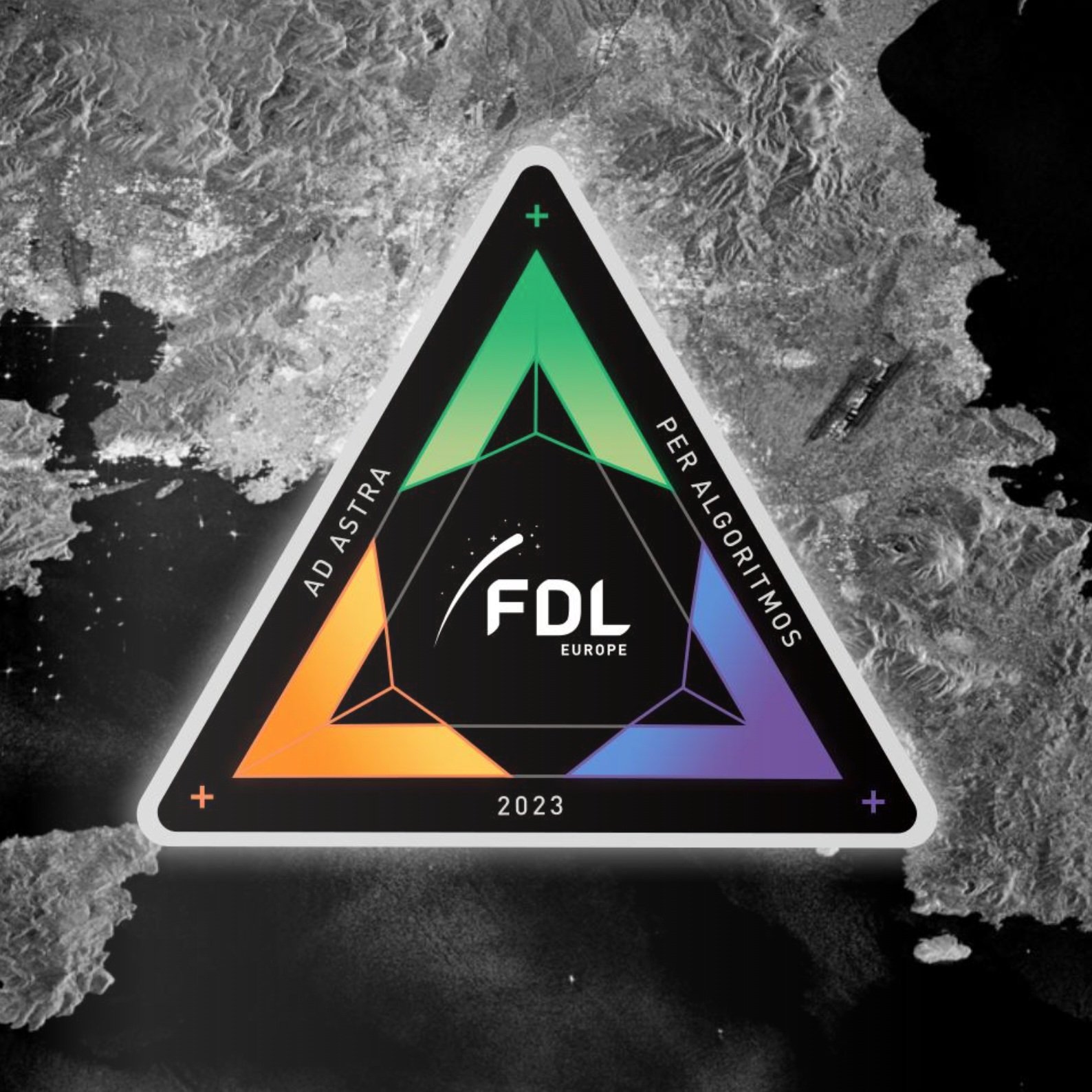
FDL Europe 2023
FDL Europe is demonstrating the potential of machine learning for both scientific process and discovery. It is facilitating the development of new paradigms of engineering from predicting GPS scintillation to co-operative robots on the Moon. Illustrative progress in science includes: methods for predicting natural phenomena, but also discovery of new physical insight to enable earlier decisions, better predictions and planning strategies within complex systems.
Artificial Intelligence is enabling a bold new era of these capabilities and FDL Europe’s goal is to explore new science and apply these new techniques in a safe, ethical and reproducible way to the biggest challenges in space science and exploration - for the good of all humankind.
Generalizable Models for Synthetic Aperture Radar
How can we develop foundation models for analysing synthetic aperture radar (SAR) Earth observation data, that can generalise to a range of downstream tasks and deliver robust results across time and space?
SAR technology has proven to be an indispensable remote sensing tool, as it penetrates through clouds and can detect millimetre-level changes on the ground from interferometric processing. In 2022, FDL.AI developed DeepSlide: an end-to-end machine learning pipeline for landslide detection in four regions where landslides have been triggered by catastrophic events: Puerto Rico; Hokkaido, Japan; Mount Talakmau, Indonesia; and Kaikoura, New Zealand. However, DeepSlide struggles to maintain high performance when applied to new locations or times - in part due to geometric distortions such as foreshortening, layover and shadow that are unique to observations of individual events. This lack of generalisability due to the complexity of SAR data has posed a hurdle to developing SSL SAR techniques that are easily adaptable to multiple use-cases.
With this challenge, we aim to create precursor foundation models for analysing SAR imagery and to understand the challenges of creating robust ML models for a wide range of downstream tasks. This includes dealing with complex and missing data when using such models, generalising across time and space domains, and developing tooling to facilitate easy analysis and compelling visualisations.
Space Weather and early detection
How can we use machine learning onboard space observatories and on Earth to build a near-real-time warning system for potentially dangerous Solar weather events, and enhance our understanding of the Earth-Sun system?
Early detection and warning of potentially dangerous solar events is crucial for safeguarding our technological infrastructure and the safety of astronauts. One promising approach is to monitor from the fifth Lagrangian point (L5), which provides an early "side view" of the Sun. L5 is located 60 degrees behind Earth, as seen from the Sun, providing a short window of opportunity to process what it sees and predict the impact of dynamic solar weather on Earth’s environment. The VIGIL mission - currently in development by ESA - is planned for launch towards L5 in 2029 and will provide an unprecedented view of the Sun for space weather monitoring and scientific research.
Estimating the direction and propagation speed of coronal mass ejections is a difficult task and distance from L5 to Earth further imposes further challenges - limited computing power and low telemetry bandwidth.
Deploying AI onboard the L5 solar observatory has great potential to address these shortcomings in a novel way, enabling near real-time space weather awareness.
In 2022, FDL.AI developed a ‘4D’ model of the full (4π steradians) Sun called ‘SPI3S ’, which utilised STEREO and SDO images to build a fully resolved model of the Sun, viewed from anywhere in the solar system. The SPI3S project provides the foundation to utilize data from heliospheric imagers to precisely track coronal mass ejections throughout the heliosphere.
We envision developing an AI pipeline that can analyse data both onboard the spacecraft and from Earthbound observatories, significantly reducing downlink bandwidth requirements and alert latency. Such a new AI tool that could provide a novel approach to rapidly detect coronal mass ejections, study the underlying physics of solar eruptive events and determine more precisely their impact on Earth.
Foundation Models Adapters for Disasters
Can we use the power of large language models to collate and interpret information on emerging and historic disasters, providing accurate and detailed information to response, recovery and resilience teams with compelling visualisations?
Large Language Models (LLMs) have had an unexpected impact on software development and broader society in these past several months. They have proven adept at summarising knowledge and - crucially - display emergent properties, where they can be adapted to unseen tasks by carefully constructing written-language ‘prompts’: so-called ‘zero-shot’ or ‘single-shot’ learning. Research in the area of LLMs, and foundation models in general, is uncovering new capabilities daily. As a result, much is still to be explored in terms of how these tools can be used for building more effective systems, and automating cumbersome tasks.
In this challenge, the team aims to harness the possibilities of LLMs for good. By improving the curation, extraction, interpretation, and dispatching of key insights regarding natural disasters data, they propose to potentially deliver information to disaster management teams in a more timely way and for many more disaster events.
HOW ELSE CAN I GET INVOLVED WITH FDL Europe?
Follow us on Twitter, LinkedIn and sign up for our newsletter
If you have any questions, please do send us an email















